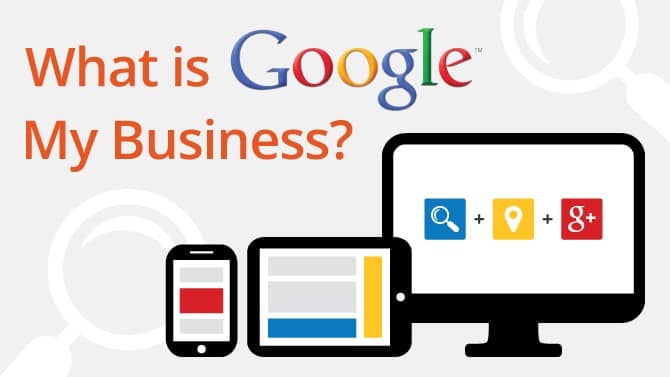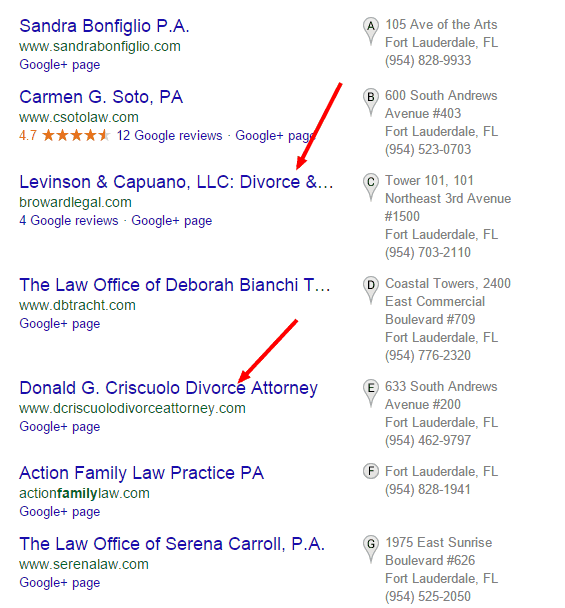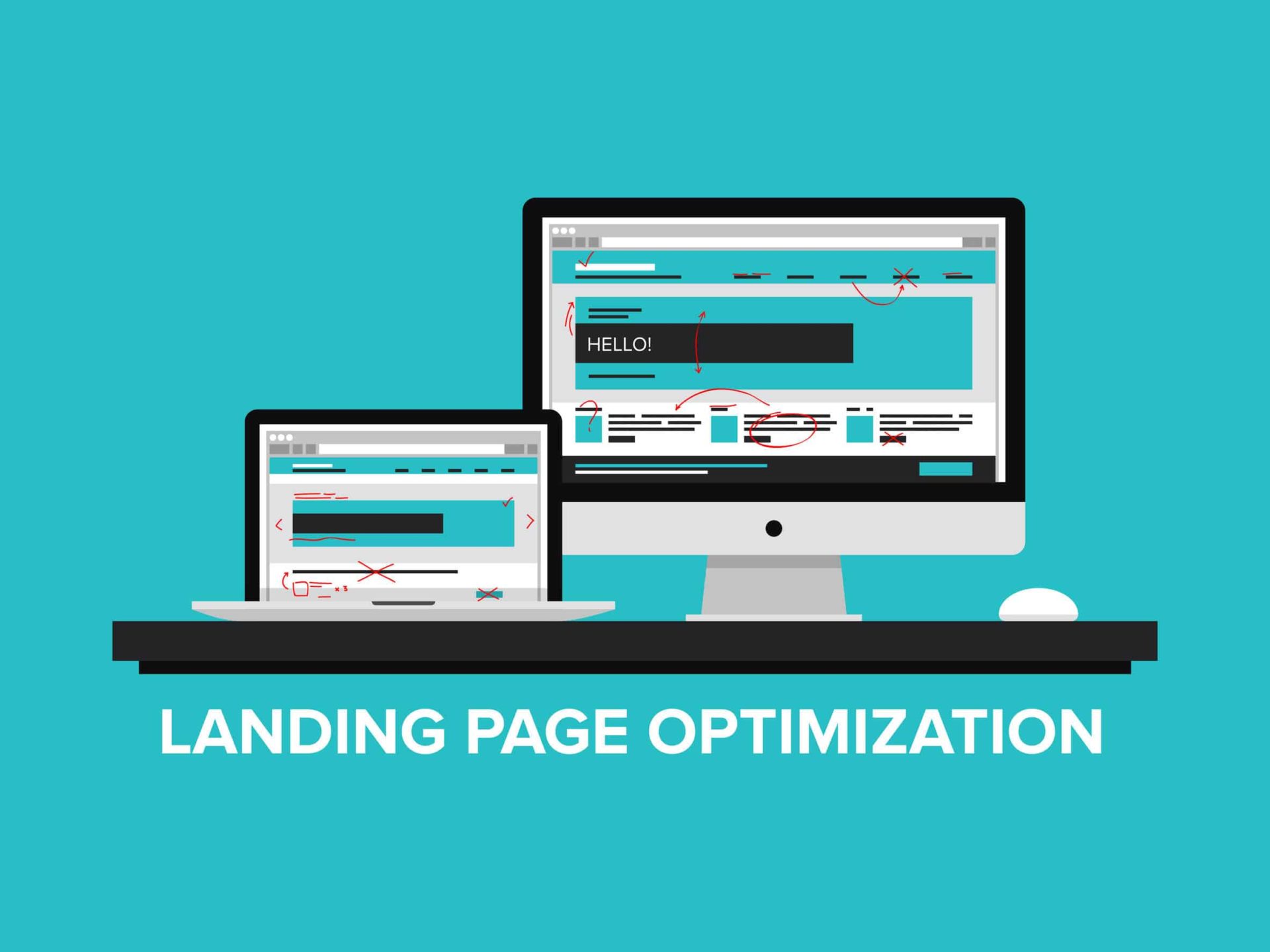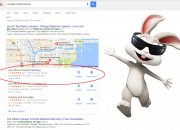
Over the past 15-plus years, it’s been pretty incredible to watch Google grow, transform, and ultimately set the standard for an entire industry. What’s most impressive about the company is the fact that it never sits still, settles for second-best, or lets somebody else make the next discovery. Google is there every step of the way, dictating the direction of search engine marketing, web research, and now, things like wearable technology, software, and even television.
As a business professional and experienced marketer, it has been fascinating to witness, up close and personal, the way Google expands and progresses over time. Most recently, it’s been interesting to watch the search engine’s transformation from a massive, impersonal search engine to a highly-customizable, local assistant.
Google Goes Local

According to a recent study from MDG Advertising, approximately 59 percent of consumers use Google every month to find good local businesses. Google, being who they are, has capitalized on this demand for local results by putting an emphasis on local search results.
While the plan had been in place for some time, it officially started in 2009 with Google Maps. It then expanded in November 2011 when Google launched Google+ Business Pages – an extension of the existing Google+ platform – as a way of encouraging businesses and consumers to connect (much like Facebook business pages). Then, in May 2012, Google+ Local was rolled out with the intention of helping people discover and share information on local businesses and products. Today the feature is called Google My Business.
The benefit of Google My Business is that businesses can access a variety of tools and resources from a single screen. This includes the ability to manage Google+ photos and videos, post links, gain insights into things like visibility and engagement, manage reviews, directly access Google Analytics, and start or join Hangouts.
It’s clear that local search has come a long way over the past few years and Google – specifically Google+ – has been there every step of the way. As a result, experts across the industry spend much of their time studying how the platform works, how consumers use it, and why it matters.
As a marketer, I am no different. Therefore, in my pursuit of learning the best ways to use Google+, I recently attended a webinar hosted by Myles Anderson of Bright Local in which four local search experts sat down to discuss advanced optimization tips for Google+ Local. These four experts – Phil Rozek of Local Visibility System, Greg Gifford of AutoRevo, Casey Meraz of Ethical SEO Consulting, and Susan Hallam, an expert speaker at industry conferences and owned of Hallam Internet – each brought fresh ideas to the table and ultimately changed the way I view Google+ Local.
Without further ado, here are some of the takeaways I left with.
InsideLocal Webinar – Advanced Google+ Optimization from BrightLocal on Vimeo.
The Basics Matter
Phil Rozek started the webinar by discussing some of the things Google is really starting to crack down on. In his opinion, the two main areas are business names and categories. As far as business names go, Google wants businesses to remove any additional descriptors or superfluous words from their titles. You should have your business name, period, and nothing to do with city, location, or adjectives that aren’t part of your official name.
Secondly, categories need to be specific. If you are an eye doctor who specializes in corrective surgery, Google doesn’t want you to simply list yourself under “Doctor.” Instead, you should be categorized as Doctor > Eye Doctor > Eye Surgeon.
According to Google’s guidelines, businesses looking to optimize their information should aim for a combination of:
- Simple, complete, and accurate location information.
- Appropriate use of categories with accurate descriptions.
- A strong web presence that presents current and correct business information.
Each Industry Is Important
Greg Gifford brought up a good point when he discussed the variance between industries. For example, he works a lot with automotive companies and lawyers. The two industries are completely different as far as their SEO maturity, and you can’t take a blanketed approach to both. In the automotive industry, he says he can throw up a GMB page for a company and many times land them on page one within a month.
However, you can’t do that for lawyers. The legal field has already adapted to SEO and optimization is a popular practice. As a result, lawyers must take a much more targeted approach, especially in the wake of the early 2014 lawsuit regarding spammy SEO tactics in the field.
Remove Descriptors – Or Potentially Suffer

As a follow up to Rozek’s discussion of using descriptors in conjunction with a business name, Susan Hallam mentioned that it’s not just a “best practice” tip – it actually could hurt you if you don’t adhere. Google has very strict guidelines that promise penalties for not removing excess words.
Hold Off Practitioners
While Casey Meraz mentions that Google has introduced new guidelines for practitioner businesses and how to optimize their GMBs, he said something rather surprising. He plans on keeping things status quo until he notices any adverse effects. Specifically, he’s planning on leaving business names the same.
Google wants solo practitioner businesses to list their practice name followed by the name of the practitioner (for example, The California Law Firm, Attorney John Smith). However, if the practitioner is one of several, then Google requests that you use the name of the practitioner only, making sure not to include the name of the organization with it. The organization would still create its own page for its location. However, in his active testing, Meraz hasn’t found that structure to be beneficial. How this changes in the coming weeks will be interesting to monitor.
Your Linking Method Depends on Company Structure
One of the more interesting questions posed in the webinar was “Do you typically link from G+ to website homepage or to location landing page?” Gifford answered this one with a two part response. For single storefront businesses, he suggested linking to the homepage – as that’s likely the most authoritative page on the web. For companies with multiple storefronts and locations, a specific landing page is better. His reasoning is that a specific landing page can provide better, more accurate contact information than an overarching corporate website.

For best possible optimization, landing pages should include the following aspects:
- A clear and visible CTA.
- Clear, concise, readable copy with definitive goals.
- Easy ways to get visitors to do what you want. (For example, if you want them to sign up for an online newsletter, only ask for their email addresses.)
- Clear and easy navigation – without all the intricacies of your main homepage.
- Excellent layout with smart use of space.
Gifford also touched on the issue of what has more impact on local ranking: page level authority or domain authority. He responded with an emphatic support of page level authority for businesses with multiple locations and storefronts. In his opinion, domain authority doesn’t even begin to compare to geo-specific landing pages when dealing with Google and local search. Rozek, on the other hand, seems to believe that linking to the homepage is always a good idea. Instead of using geo-specific pages, he recommends implementing a simple location finder on the homepage.
For Google Maps, No One-Size-Fits-All Approach
When asked about what the single most powerful factor in boosting views-to-clicks from Google Maps is, Hallam stuck to her belief that paid advertising still trumps everything else. In her experience, paid advertising is the best way to boost these interactions and clicks – but also said that adding additional descriptors can be effective. Rozek then chimed in and asserted the value of Google+ reviews. He theorized that star average is the only differentiating factor and, ultimately, the result with the highest rating will get the most clicks 90 percent of the time.
The impact of Business View is hard to determine. While nobody debated the importance of Business View, Rozek and his peers spoke about the difficulties of determining the exact ROI or “uplift.” With that being said, he said it’s a “no-brainer” that every business should have as a part of their SEO strategy. Google certainly sees it as another authority link and sign of credibility, but just how important it is can’t accurately be determined at this point.
Address Behavioral Signal Manipulation
As things currently stand, it’s fairly easy to manipulate Behavioral Signals; however, Meraz warned against going too far. In his opinion, Google will soon begin to crack down on these manipulations and you don’t want to get caught in a tight spot. As always, the best practice is to avoid any excessive manipulation that could raise red flags with Google.
In Conclusion
While these are some of the major takeaways I left with from the InsideLocal Webinar, lots of additional valuable information was discussed. Depending on what your business wants to accomplish, what industry you operate in, and how solid your current SEO strategy is, you may find value in listening to the Webinar yourself.
As always, it’s important to remember that SEO, Google, and Google+ are constantly changing – and 2015 will be no different.Click To Tweet To ensure long-term success, stay updated and educated along the way.Sources:
- http://vimeo.com/113697418
- http://www.brightlocal.com
- https://support.google.com/business/answer/3038177
- http://www.brightlocal.com/2014/12/04/insidelocal-webinar-troubleshooting-local-ranking-issues/
- http://www.localvisibilitysystem.com/
- http://www.autorevo.com/
- http://www.hallaminternet.com/
- http://www.ethicalseoconsulting.com/
- https://support.google.com/business/answer/4454429?hl=en
- https://www.seroundtable.com/seo-sued-spam-18612.html
- https://blog.kissmetrics.com/beginners-guide-to-landing-pages/
- http://moz.com/local-search-ranking-factors
- http://searchenginewatch.com/sew/study/2305421/315-businesses-boost-rankings-by-optimizing-their-google-local-pages-study





 The Local Search Ranking Factors That Really Matter in 2017
The Local Search Ranking Factors That Really Matter in 2017 What Every Attorney Needs to Know about Citation Building for SEO
What Every Attorney Needs to Know about Citation Building for SEO Your Guide to Better Local SEO Results
Your Guide to Better Local SEO Results Go Local or Go Home: What Marketers Need to Know About Local SEO (LSEO)
Go Local or Go Home: What Marketers Need to Know About Local SEO (LSEO)